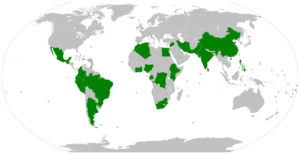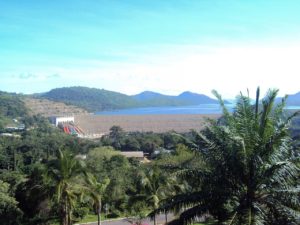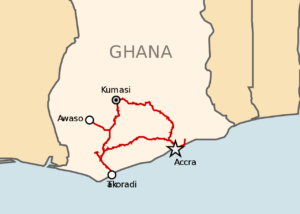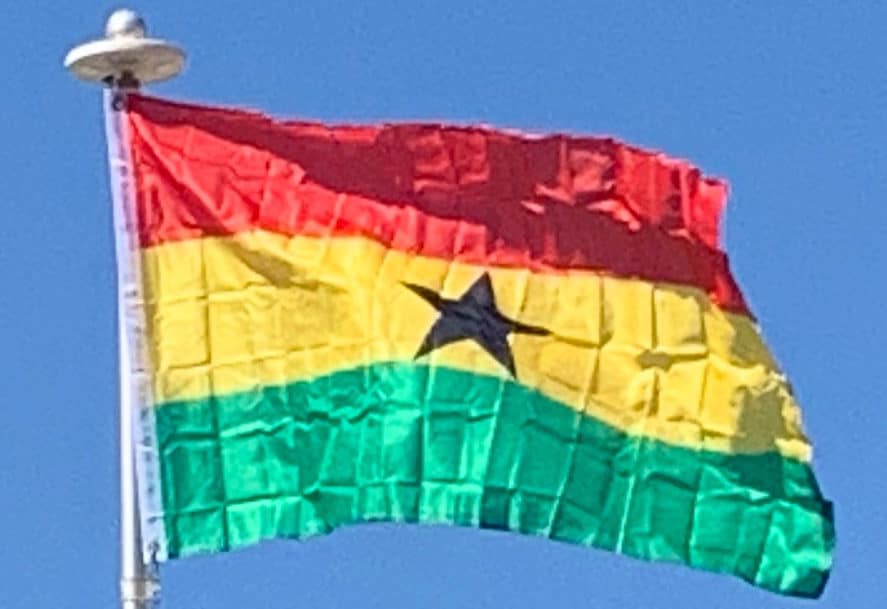
Ghana’s economy also has ties to the Chinese yuan renminbi along with Ghana’s vast gold reserves. In 2013, the Bank of Ghana began circulating the renminbi throughout Ghanaian state-owned banks and to the Ghana public as hard currency along with the national Ghana cedi for second national trade currency. Between 2012 and 2013, 37.9 percent of rural dwellers were experiencing poverty whereas only 10.6 percent of urban dwellers were. Urban areas hold greater opportunity for employment, particularly in informal trade, while nearly all (94 percent) of rural poor households participate in the agricultural sector.
The state-owned Volta River Authority and Ghana National Petroleum Corporation are the two major electricity producers. The Akosombo Dam, built on the Volta River in 1965, along with Bui Dam, Kpong Dam, and several other hydroelectric dams provide hydropower. In addition, the Government of Ghana has sought to build the second nuclear power plant in Africa.

The Ghana Stock Exchange is the 5th largest on continental Africa and 3rd largest in sub-Saharan Africa with a market capitalization of GH¢ 57.2 billion or CN¥ 180.4 billion in 2012 with the South Africa JSE Limited as first. The Ghana Stock Exchange (GSE) was the 2nd best performing stock exchange in sub-Saharan Africa in 2013.
Ghana also produces high-quality cocoa. It is the 2nd largest producer of cocoa globally, and was projected to become the world’s largest producer of cocoa in 2015.
Ghana is classified as a middle income country. Services account for 50% of GDP, followed by manufacturing (24.1%), extractive industries (5%), and taxes (20.9%).
Transportation:
Transport in Ghana is accomplished by road, rail, air and water. Ghana’s transportation and communications networks are centered in the southern regions, especially the areas in which gold, cocoa, and timber are produced. The northern and central areas are connected through a major road system.
Increased transport investment helped to increase the number of new vehicle registrations and transportation alternatives include rail, road, ferry, marine and air.
The railway system in Ghana has historically been confined to the plains south of the barrier range of mountains north of the city of Kumasi. However, the 1,067 mm (3 ft 6 in) narrow gauge railway, totaling 935 kilometres, is presently undergoing major rehabilitation and inroads to the interior are now being made. In Ghana, most of the lines are single tracked, and in 1997, it was estimated that 32 kilometres were double tracked.

Road transport is by far the dominant carrier of freight and passengers in Ghana’s land transport system. It carries over 95% of all passenger and freight traffic and reaches most communities, and is classified under three categories of trunk roads, urban roads, and feeder roads. The Ghana Highway Authority, established in 1974 is tasked with developing and maintaining the country’s trunk road network totaling 13,367 km, which makes up 33% of Ghana’s total road network of 40,186 km.
Trunk roads in Ghana are classified as National roads, Regional roads, and Inter-regional roads, all of which form the Ghana road network. National roads, designated with the letter N, link all the major population centers in Ghana. Regional roads, designated with the letter R, are a mix of primary and secondary routes, which serve as feeder roads to National roads; while Inter-Regional roads, designated with the prefix IR, connect major settlements across regional borders.
